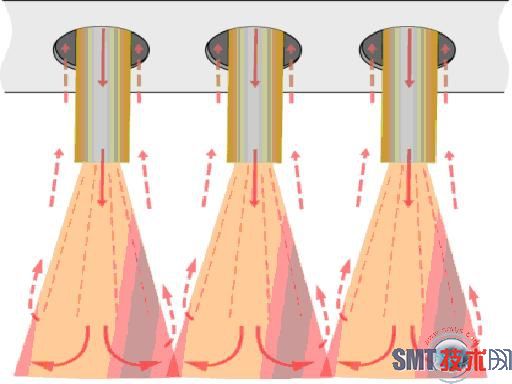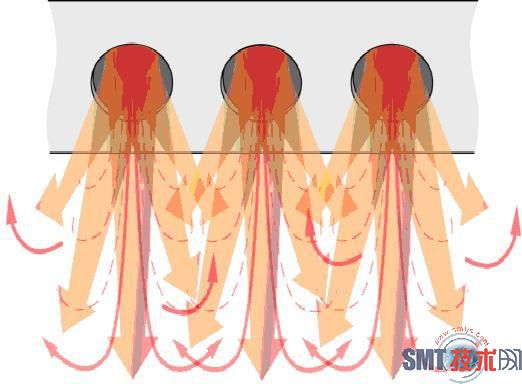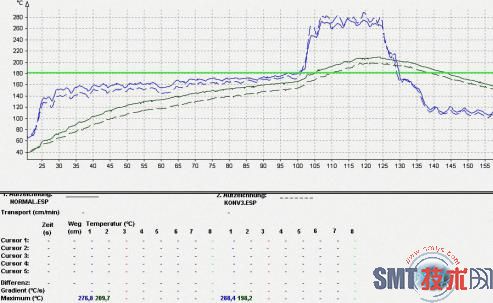What new requirements does the increasingly mature lead-free process put on the reflow oven?
We analyze from the following aspects:
l How to obtain a smaller lateral temperature difference
Since the lead-free soldering process window is small, the control of the lateral temperature difference is very important. The temperature in reflow soldering is generally affected by four factors:
(1) Transmission of hot air
The current mainstream lead-free reflow ovens all adopt 100% full hot air heating. In the development of reflow ovens, infrared heating methods have also appeared. However, due to infrared heating, the infrared absorption and reflectivity of different color devices are different and the shadow effect is caused by the blocking of adjacent original devices. Both of these situations will cause temperature differences. Lead-free soldering has the risk of jumping out of the process window, so infrared heating technology has been gradually eliminated in the heating method of the reflow oven. In lead-free soldering, the heat transfer effect needs to be emphasized. Especially for the original device with large heat capacity, if sufficient heat transfer cannot be obtained, the heating rate will obviously lag behind that of the device with small heat capacity, resulting in a lateral temperature difference. Let’s take a look at the two hot air transfer modes in Figure 2 and Figure 3.
Figure 2 Hot air transfer method 1
Figure 2 Hot air transfer method 1
The hot air in Figure 2 blows out from the holes of the heating plate, and the flow of hot air does not have a clear direction, which is rather messy, so the heat transfer effect is not good.
The design of Figure 3 is equipped with directional multi-point nozzles of hot air, so the flow of hot air is concentrated and has a clear directionality. The heat transfer effect of such hot air heating increases by about 15%, and the increase of the heat transfer effect will play a greater role in reducing the lateral temperature difference of large and small heat capacity devices.
The design of Figure 3 can also reduce the interference of lateral wind on the welding of the circuit board because the flow of hot air has a clear directionality. Minimizing the lateral wind can not only prevent small components such as 0201 on the circuit board from being blown away, but also reduce the mutual interference between different temperature zones.
(1) Chain speed control
The control of the chain speed will affect the lateral temperature difference of the circuit board. Generally speaking, reducing the chain speed will give more heating time for devices with large heat capacity, thereby reducing the lateral temperature difference. But after all, the setting of the furnace temperature curve depends on the requirements of the solder paste, so unlimited reduction of the chain speed is unrealistic in actual production.
(2) Wind speed and volume control
We have done such an experiment, keeping the other conditions in the reflow oven unchanged and only reduce the fan speed in the reflow oven by 30%, and the temperature on the circuit board will drop by about 10 degrees. It can be seen that the control of wind speed and air volume is important for furnace temperature control.
Post time: Aug-11-2020



